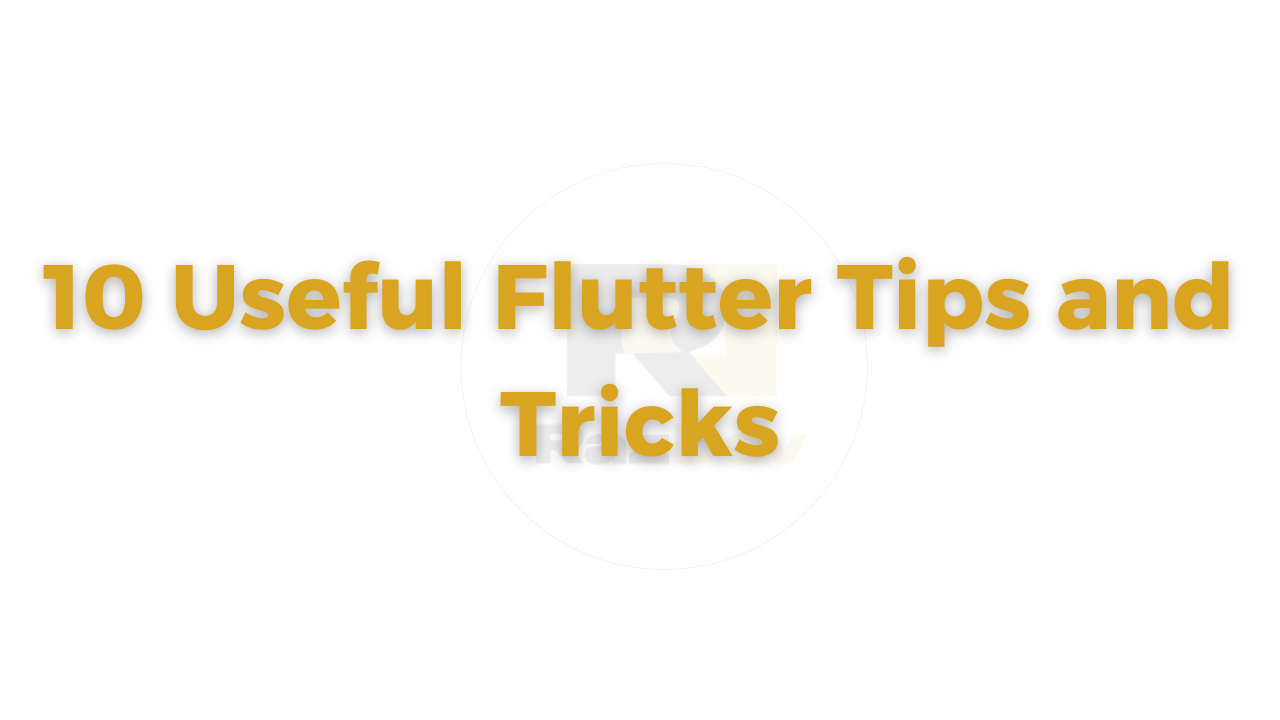Flutter, a popular open-source framework by Google, is a game-changer for building cross-platform applications with a single codebase. While Flutter is beginner-friendly, knowing a few tips and tricks can save time, improve performance, and make your apps more polished. Here are 10 useful tips and tricks every Flutter developer should know:
1. Use Hot Reload to Speed Up Development
Flutter’s hot reload feature is a developer’s best friend. It allows you to instantly see the effects of your code changes without restarting the app. However, remember:
- Use hot restart for changes to the
main()function or state initialization. - Avoid relying on hot reload for layout fixes; always test with a fresh start before production.
2. Leverage Widgets Effectively
Flutter’s widget tree can get complex quickly. Simplify it by:
- Breaking large widgets into smaller, reusable components.
- Using built-in widgets like
ListView.builderfor dynamic lists orFutureBuilderfor async data handling.
3. Optimize Performance with const Widgets
Use the const keyword for widgets that don’t change. This reduces widget rebuilds and improves performance:
const Text(
‘Hello, Flutter!’,
style: TextStyle(fontSize: 20),
);
4. Take Advantage of MediaQuery for Responsive Design
Ensure your app looks good on all devices:
double width = MediaQuery.of(context).size.width;
double height = MediaQuery.of(context).size.height;
5. Use Provider or Riverpod for State Management
For simple apps, setState is sufficient, but for scaling apps, use state management solutions:
- Provider is ideal for beginners and has great community support.
- Riverpod offers enhanced features like compile-time safety and easier debugging.
6. Debug Faster with the Flutter Inspector
The Flutter DevTools include a powerful Inspector for visualizing the widget tree and debugging UI issues. Use it to:
- Locate widgets in the widget tree.
- Diagnose layout issues and analyze performance bottlenecks.
7. Use Animation Widgets for Smooth Transitions
Make your app visually appealing with built-in animation widgets like:
AnimatedOpacityfor fading effects.AnimatedContainerfor resizing or styling changes. For complex animations, exploreflutter_animateorrive.
8. Use Custom Fonts and Icons
Enhance the app’s aesthetics by adding custom fonts and icons:
- Add fonts to your project in the
pubspec.yamlfile. - Use
GoogleFontsfor easy access to popular fonts. - For icons,
flutter_svgis great for scaling vector icons.
9. Implement Dark Mode Easily
Flutter makes it easy to support dark mode. Define themes in your MaterialApp:
heme: ThemeData.light(),
darkTheme: ThemeData.dark(),
themeMode: ThemeMode.system, // Automatically switches based on system settings
10. Use Packages to Save Time
Don’t reinvent the wheel. Flutter’s ecosystem has thousands of packages available. Some must-haves include:
httpordiofor API calls.shared_preferencesfor local storage.firebase_coreandcloud_firestorefor Firebase integration.
Conclusion
Flutter’s versatility and vast ecosystem empower developers to create stunning, high-performance applications. By leveraging these tips and tricks, you can boost your productivity, create better user experiences, and optimize your development workflow.
Happy coding! 🚀

